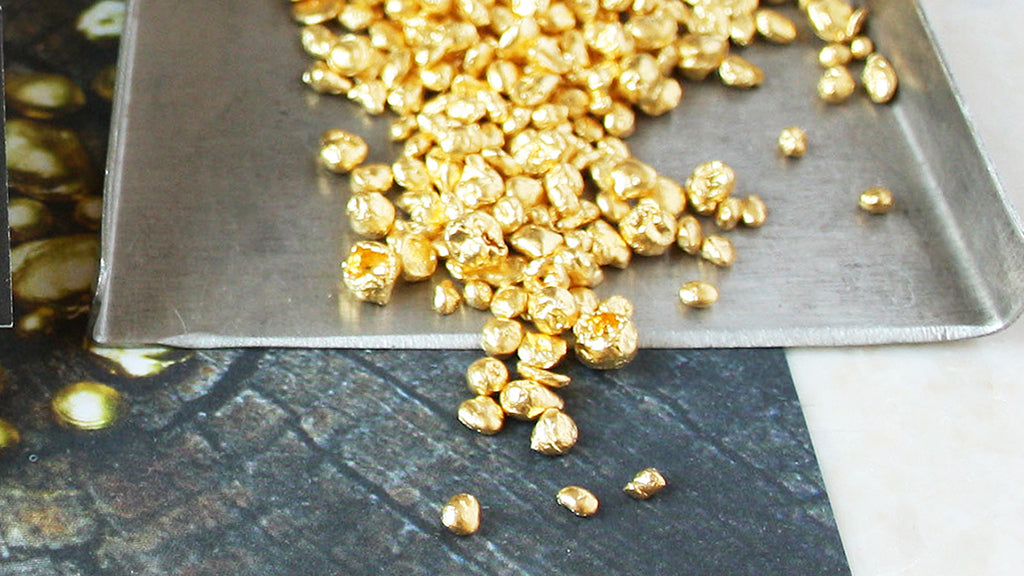Your Cart is Empty
Pure gold is very soft and often not practical to use alone in fine jewellery. For this reason, it's combined with other metals for durability. This hardiness is particularly important in the instance of gold engagement rings and wedding bands, which are exposed to the elements every single day in a quest to withstand the tests of time. Caratage is the measurement of gold's purity; it indicates the volume of pure gold in an alloy.
18ct gold is 75% pure gold and 25% other metals (usually a combination of silver and copper). In the case of white gold, that 25% consists purely of white metals, present to contribute a silvery hue.
9ct gold, on the other hand, has a content of 37.5% pure gold and 62.5% other metals.
In short, 18ct gold is 18 parts pure gold; whilst 9ct gold is only 9 parts pure.

Carat weight is in fact the only factor to influence the appearance of gold. Whilst provenance makes no difference (Fairtrade, Fairmined, recycled or industry standard - 18ct gold looks like 18ct gold), the lower the gold content the more diluted the metal in hue. You'll notice that 9ct gold is lighter, less yellow and less lustrous than its 18ct counterpart.
 Our D-shaped Diamond Star wedding band stacked with our D-shaped Beloved Diamond wedding band
Our D-shaped Diamond Star wedding band stacked with our D-shaped Beloved Diamond wedding bandAll in all, 9ct gold is tough enough to survive a lifetime of wear - but 18ct gold is better suited to heirloom pieces chosen with future generations in mind.
Whilst 9ct gold is technically 'harder' than 18ct gold, scoring higher on the Mohs Scale of Hardness, this doesn't mean it's more resilient in the long-term. 9ct gold is in fact more brittle, which means it's less resistant to knocks and scratches on a microscopic scale. When compared over a longer period of time, 18ct gold has got what it takes to hold its own.
If you're dreaming of an intricately hand-engraved design like our Athena Grande engagement ring or our Cedar wedding band there's no question about it: 18ct gold is the option for you.
On the other hand, if you're open to something rustic and weathered like our matte hammered bands, whose surfaces cleverly absorb day-to-day knocks and scrapes, you could just get away with a lower-carat alloy.
If you do choose 9ct gold for your engagement ring or wedding band, the key to its longevity is the correct care. This means removing your jewellery before any sort of activity that might jeopardise it - from lifting weights in the gym to washing the dishes, showering and planting flowers in the garden. Check out our complete jewellery care guide for more tips.
 His and hers - two flat-profile wedding bands in 18ct yellow Fairtrade Gold, hand engraved with private messages inside
His and hers - two flat-profile wedding bands in 18ct yellow Fairtrade Gold, hand engraved with private messages inside
The more gold in the mix, the higher the carat weight and the higher the cost. Generally speaking, 18ct gold costs around twice as much as its 9ct gold. Of course, this means that 9ct gold jewellery is comparably more affordable in the first instance, but if you're seeking jewellery as long-term financial investment, this price difference is worth bearing in mind.
